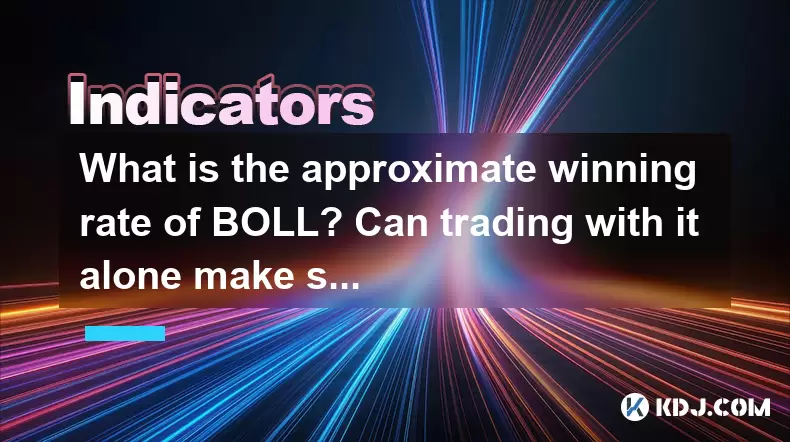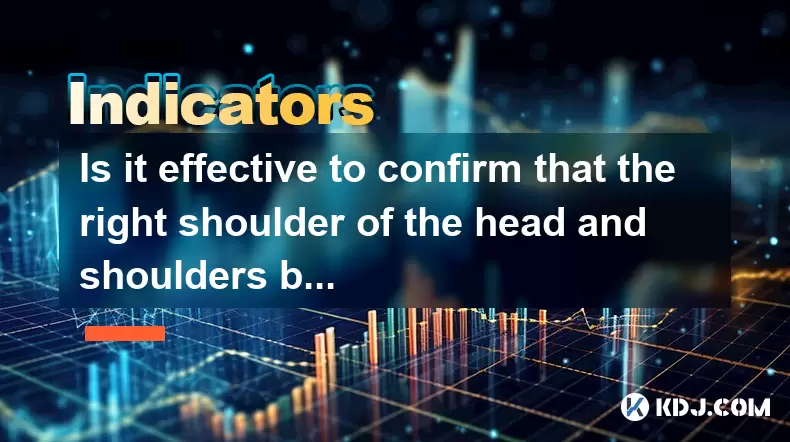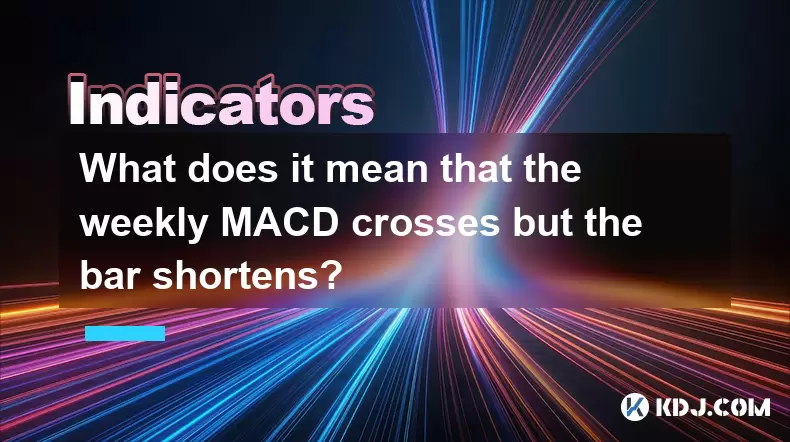-
 Bitcoin
Bitcoin $106,754.6083
1.33% -
 Ethereum
Ethereum $2,625.8249
3.80% -
 Tether USDt
Tether USDt $1.0001
-0.03% -
 XRP
XRP $2.1891
1.67% -
 BNB
BNB $654.5220
0.66% -
 Solana
Solana $156.9428
7.28% -
 USDC
USDC $0.9998
0.00% -
 Dogecoin
Dogecoin $0.1780
1.14% -
 TRON
TRON $0.2706
-0.16% -
 Cardano
Cardano $0.6470
2.77% -
 Hyperliquid
Hyperliquid $44.6467
10.24% -
 Sui
Sui $3.1128
3.86% -
 Bitcoin Cash
Bitcoin Cash $455.7646
3.00% -
 Chainlink
Chainlink $13.6858
4.08% -
 UNUS SED LEO
UNUS SED LEO $9.2682
0.21% -
 Avalanche
Avalanche $19.7433
3.79% -
 Stellar
Stellar $0.2616
1.64% -
 Toncoin
Toncoin $3.0222
2.19% -
 Shiba Inu
Shiba Inu $0.0...01220
1.49% -
 Hedera
Hedera $0.1580
2.75% -
 Litecoin
Litecoin $87.4964
2.29% -
 Polkadot
Polkadot $3.8958
3.05% -
 Ethena USDe
Ethena USDe $1.0000
-0.04% -
 Monero
Monero $317.2263
0.26% -
 Bitget Token
Bitget Token $4.5985
1.68% -
 Dai
Dai $0.9999
0.00% -
 Pepe
Pepe $0.0...01140
2.44% -
 Uniswap
Uniswap $7.6065
5.29% -
 Pi
Pi $0.6042
-2.00% -
 Aave
Aave $289.6343
6.02%
What is the approximate winning rate of BOLL? Can trading with it alone make stable profits?
Bollinger Bands help identify potential buy/sell signals in crypto trading, but using them alone can lead to inconsistent results; a comprehensive strategy is key.
Jun 08, 2025 at 04:21 am

The Bollinger Bands (BOLL) is a popular technical analysis tool used by traders in the cryptocurrency market to identify potential buy and sell signals. The winning rate of BOLL, or the percentage of trades that result in a profit, can vary significantly depending on several factors including market conditions, the trader's strategy, and the specific parameters set for the Bollinger Bands. While some traders report winning rates around 60-70%, it's important to understand that these figures are not universally applicable and can fluctuate.
Can trading with BOLL alone make stable profits? The answer is generally no. While Bollinger Bands can be a powerful tool in a trader's arsenal, relying solely on them for trading decisions is risky and can lead to inconsistent results. Effective trading often requires the use of multiple indicators and a comprehensive trading strategy to account for the complexities of the market.
Understanding Bollinger Bands
Bollinger Bands consist of three lines: a simple moving average (SMA) in the middle, and an upper and lower band that are typically two standard deviations away from the SMA. The middle band is usually set to a 20-day SMA, but this can be adjusted based on the trader's preference. The upper and lower bands are calculated as follows:
- Upper Band: SMA + (2 Standard Deviation)
- Lower Band: SMA - (2 Standard Deviation)
These bands help traders identify overbought and oversold conditions in the market. When the price touches or crosses the upper band, it may indicate that the asset is overbought, and a price correction could be imminent. Conversely, when the price touches or crosses the lower band, it may signal that the asset is oversold, and a price increase could be on the horizon.
Factors Affecting the Winning Rate of BOLL
Several factors can influence the winning rate when using Bollinger Bands:
Market Volatility: High volatility can lead to wider bands, which may result in more frequent signals but also higher risk. In contrast, low volatility can lead to narrower bands and fewer signals, potentially reducing the number of profitable trades.
Timeframe: The timeframe used for the Bollinger Bands can significantly affect the signals generated. Shorter timeframes may provide more signals but with higher risk, while longer timeframes may offer fewer but potentially more reliable signals.
Parameter Settings: The choice of the moving average period and the number of standard deviations can greatly influence the sensitivity of the Bollinger Bands. Adjusting these parameters can help tailor the tool to specific market conditions or trading strategies.
Trader's Experience: Experienced traders may be able to interpret Bollinger Band signals more effectively, leading to a higher winning rate compared to novice traders.
Strategies for Using Bollinger Bands
While Bollinger Bands can be used as a standalone tool, they are often more effective when combined with other indicators. Here are some common strategies:
Bollinger Band Squeeze: This strategy looks for periods where the bands are narrow, indicating low volatility. A subsequent expansion of the bands may signal the start of a new trend, offering a potential trading opportunity.
Bollinger Band Breakout: Traders may enter a position when the price breaks out of the upper or lower band. A breakout above the upper band could be a buy signal, while a breakout below the lower band could be a sell signal.
Combining with Other Indicators: Using Bollinger Bands in conjunction with other technical indicators like the Relative Strength Index (RSI) or Moving Average Convergence Divergence (MACD) can provide more robust signals. For example, a trader might wait for the price to touch the lower Bollinger Band and the RSI to be in oversold territory before entering a long position.
Limitations of Bollinger Bands
While Bollinger Bands are a valuable tool, they have several limitations that traders should be aware of:
False Signals: Like all technical indicators, Bollinger Bands can produce false signals. A price touching the upper band does not always mean an immediate reversal, and the same applies to the lower band.
Lag: Bollinger Bands are based on historical data, which means they can lag behind real-time market movements. This lag can lead to missed opportunities or late entries into trades.
Over-reliance: Relying too heavily on any single indicator can lead to poor trading decisions. It's crucial to use Bollinger Bands as part of a broader trading strategy that incorporates multiple sources of information.
Practical Application of Bollinger Bands
To apply Bollinger Bands effectively in trading, follow these steps:
Choose a Trading Platform: Select a reliable cryptocurrency trading platform that offers charting tools with Bollinger Bands.
Set Up the Chart: Open the chart for the cryptocurrency you wish to trade and add Bollinger Bands to the chart. Ensure the default settings are a 20-day SMA and 2 standard deviations, or adjust according to your strategy.
Identify Signals: Monitor the price in relation to the bands. Look for the following signals:
- Price touching or crossing the upper band: Potential overbought condition and sell signal.
- Price touching or crossing the lower band: Potential oversold condition and buy signal.
- Band squeeze: Narrow bands indicating low volatility, followed by an expansion signaling potential trend start.
Confirm with Other Indicators: Use additional indicators like RSI or MACD to confirm the signals provided by the Bollinger Bands.
Execute Trades: Based on the signals and confirmations, execute your trades. Set stop-loss and take-profit orders to manage risk.
Monitor and Adjust: Continuously monitor your trades and be prepared to adjust your strategy as market conditions change.
Enhancing Trading Stability with Bollinger Bands
To increase the stability of profits when using Bollinger Bands, consider the following tips:
Diversify Your Strategy: Use Bollinger Bands in combination with other technical indicators and fundamental analysis to create a well-rounded trading strategy.
Risk Management: Implement strict risk management rules, such as setting stop-loss orders and only risking a small percentage of your trading capital on each trade.
Backtesting: Before applying a Bollinger Bands strategy in live trading, backtest it using historical data to assess its effectiveness and make necessary adjustments.
Continuous Learning: Stay informed about market trends and continuously refine your understanding of how Bollinger Bands work in different market conditions.
Frequently Asked Questions
Q: Can Bollinger Bands be used for all cryptocurrencies?
A: Yes, Bollinger Bands can be applied to any cryptocurrency that has sufficient price data. However, the effectiveness may vary depending on the liquidity and volatility of the specific cryptocurrency.
Q: How often should I adjust the Bollinger Bands settings?
A: The frequency of adjusting Bollinger Bands settings depends on your trading strategy and the market conditions. Some traders may adjust the settings frequently to adapt to short-term market changes, while others may use fixed settings over longer periods.
Q: Is it possible to automate trading with Bollinger Bands?
A: Yes, many trading platforms and software allow for the automation of trading strategies based on Bollinger Bands. However, it's important to thoroughly test and monitor automated systems to ensure they perform as expected.
Q: How do Bollinger Bands perform in highly volatile markets?
A: In highly volatile markets, Bollinger Bands may produce wider bands, leading to more frequent signals. While this can offer more trading opportunities, it also increases the risk of false signals and larger price swings, requiring careful risk management.
Disclaimer:info@kdj.com
The information provided is not trading advice. kdj.com does not assume any responsibility for any investments made based on the information provided in this article. Cryptocurrencies are highly volatile and it is highly recommended that you invest with caution after thorough research!
If you believe that the content used on this website infringes your copyright, please contact us immediately (info@kdj.com) and we will delete it promptly.
- 2025-W Uncirculated American Gold Eagle and Dr. Vera Rubin Quarter Mark New Products
- 2025-06-13 06:25:13
- Ruvi AI (RVU) Leverages Blockchain and Artificial Intelligence to Disrupt Marketing, Entertainment, and Finance
- 2025-06-13 07:05:12
- H100 Group AB Raises 101 Million SEK (Approximately $10.6 Million) to Bolster Bitcoin Reserves
- 2025-06-13 06:25:13
- Galaxy Digital CEO Mike Novogratz Says Bitcoin Will Replace Gold and Go to $1,000,000
- 2025-06-13 06:45:13
- Trust Wallet Token (TWT) Price Drops 5.7% as RWA Integration Plans Ignite Excitement
- 2025-06-13 06:45:13
- Ethereum (ETH) Is in the Second Phase of a Three-Stage Market Cycle
- 2025-06-13 07:25:13
Related knowledge

How to interpret the low opening the next day after the long lower shadow hits the bottom?
Jun 18,2025 at 12:22am
Understanding the Long Lower Shadow Candlestick PatternIn technical analysis, a long lower shadow candlestick is often seen as a potential reversal signal in a downtrend. This pattern occurs when the price opens, trades significantly lower during the session, but then recovers to close near the opening price or slightly above. The long wick at the botto...

How to operate the RSI indicator repeatedly in the 40-60 range?
Jun 18,2025 at 12:56am
Understanding the RSI Indicator and Its RelevanceThe Relative Strength Index (RSI) is a momentum oscillator widely used in cryptocurrency trading to measure the speed and change of price movements. Typically, the RSI ranges from 0 to 100, with levels above 70 considered overbought and below 30 considered oversold. However, when the RSI repeatedly stays ...

How strong is the MACD golden cross below the zero axis?
Jun 17,2025 at 11:00pm
Understanding the MACD Indicator in Cryptocurrency TradingThe Moving Average Convergence Divergence (MACD) is one of the most widely used technical indicators among cryptocurrency traders. It helps identify potential trend reversals, momentum shifts, and entry or exit points. The MACD consists of three main components: the MACD line, the signal line, an...

How effective is the golden cross of the William indicator double line in the oversold area?
Jun 17,2025 at 11:56pm
Understanding the William Indicator and Its Double Line SetupThe William %R (Williams Percent Range) is a momentum oscillator used to identify overbought or oversold conditions in a market. It ranges from 0 to -100, with readings above -20 considered overbought and below -80 deemed oversold. The double line setup refers to plotting two different timefra...

Is it effective to confirm that the right shoulder of the head and shoulders bottom volume at the 30-minute level is enlarged?
Jun 17,2025 at 11:42pm
Understanding the Head and Shoulders Pattern in Cryptocurrency TradingThe head and shoulders pattern is one of the most recognized reversal patterns in technical analysis, especially within cryptocurrency trading. It typically signals a potential shift from a bullish trend to a bearish one. This pattern consists of three peaks: the left shoulder, the he...

What does it mean that the weekly MACD crosses but the bar shortens?
Jun 18,2025 at 01:07am
Understanding the MACD IndicatorThe Moving Average Convergence Divergence (MACD) is a popular technical analysis tool used in cryptocurrency trading to identify potential trend reversals and momentum shifts. It consists of three main components: the MACD line, the signal line, and the histogram (also known as the bar). The MACD line is calculated by sub...

How to interpret the low opening the next day after the long lower shadow hits the bottom?
Jun 18,2025 at 12:22am
Understanding the Long Lower Shadow Candlestick PatternIn technical analysis, a long lower shadow candlestick is often seen as a potential reversal signal in a downtrend. This pattern occurs when the price opens, trades significantly lower during the session, but then recovers to close near the opening price or slightly above. The long wick at the botto...

How to operate the RSI indicator repeatedly in the 40-60 range?
Jun 18,2025 at 12:56am
Understanding the RSI Indicator and Its RelevanceThe Relative Strength Index (RSI) is a momentum oscillator widely used in cryptocurrency trading to measure the speed and change of price movements. Typically, the RSI ranges from 0 to 100, with levels above 70 considered overbought and below 30 considered oversold. However, when the RSI repeatedly stays ...

How strong is the MACD golden cross below the zero axis?
Jun 17,2025 at 11:00pm
Understanding the MACD Indicator in Cryptocurrency TradingThe Moving Average Convergence Divergence (MACD) is one of the most widely used technical indicators among cryptocurrency traders. It helps identify potential trend reversals, momentum shifts, and entry or exit points. The MACD consists of three main components: the MACD line, the signal line, an...

How effective is the golden cross of the William indicator double line in the oversold area?
Jun 17,2025 at 11:56pm
Understanding the William Indicator and Its Double Line SetupThe William %R (Williams Percent Range) is a momentum oscillator used to identify overbought or oversold conditions in a market. It ranges from 0 to -100, with readings above -20 considered overbought and below -80 deemed oversold. The double line setup refers to plotting two different timefra...

Is it effective to confirm that the right shoulder of the head and shoulders bottom volume at the 30-minute level is enlarged?
Jun 17,2025 at 11:42pm
Understanding the Head and Shoulders Pattern in Cryptocurrency TradingThe head and shoulders pattern is one of the most recognized reversal patterns in technical analysis, especially within cryptocurrency trading. It typically signals a potential shift from a bullish trend to a bearish one. This pattern consists of three peaks: the left shoulder, the he...

What does it mean that the weekly MACD crosses but the bar shortens?
Jun 18,2025 at 01:07am
Understanding the MACD IndicatorThe Moving Average Convergence Divergence (MACD) is a popular technical analysis tool used in cryptocurrency trading to identify potential trend reversals and momentum shifts. It consists of three main components: the MACD line, the signal line, and the histogram (also known as the bar). The MACD line is calculated by sub...
See all articles

























































































